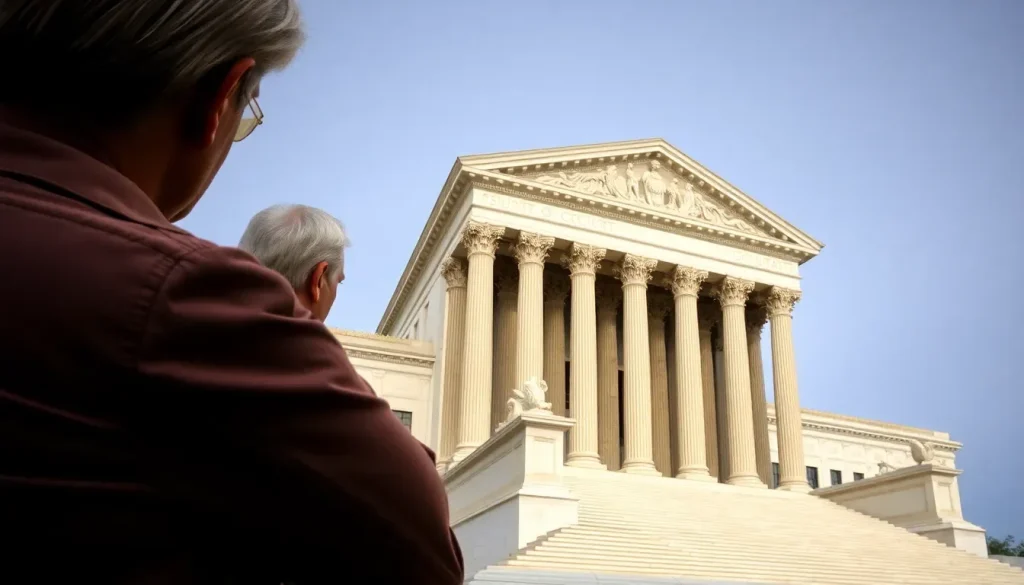US Supreme Court hears arguments about Trump's tariffs

On November 5, the U.S. Supreme Court heard crucial arguments regarding the contentious tariffs imposed by former President Donald Trump. The outcome of this case could not only reshape trade policies but also redefine the boundaries of presidential power in economic matters.
As the case unfolds, its implications are profound, provoking discussions on constitutional authority and the economic repercussions of these tariffs on American businesses and consumers alike. Trump's administration has characterized this case as pivotal, warning that a ruling against him could lead to significant economic turmoil.
Understanding the Legal Foundations of Tariffs
The Constitution explicitly grants Congress the power to levy tariffs, a crucial aspect that underpins the current legal debates. However, the Trump administration argues that in emergency situations, the president can regulate imports, which they interpret as including the implementation of tariffs.
This legal interpretation is rooted in the International Emergency Economic Powers Act (IEEPA) of 1977, which has sparked controversy. The act allows the president to regulate commerce during national emergencies, but the challengers contend that it does not explicitly grant tariff authority.
- **First Set of Tariffs:** Implemented on imports from Canada, China, and Mexico, justified by an emergency declaration over drug trafficking.
- **Second Set of Tariffs:** “Reciprocal” tariffs imposed on various countries, announced in April, aimed at counteracting unfair trade practices.
During the Supreme Court hearing, Justice Amy Coney Barrett pressed the government on the legitimacy of using IEEPA for tariffs, questioning if there had ever been a precedent for such an action. Justice Neil Gorsuch raised concerns about the potential risks of granting excessive power to the presidency, hinting at the implications this case could have for future administrations.
The Economic Stakes of the Supreme Court Ruling
As this case progresses, the economic stakes are enormous. The tariffs in question have generated approximately $195 billion in revenue as of September, a significant sum for the federal government. However, the possibility of refunds for these collected tariffs complicates the scenario if the court rules against Trump.
Lower courts have already deemed many of Trump's tariffs illegal, citing misuse of emergency powers. Should the Supreme Court uphold this stance, it would not only impact current tariffs but could also restrict the ability of future presidents to impose similar measures swiftly.
Future Presidential Powers in Environmental Policy
A particularly intriguing aspect of the hearings was the discussion about whether the powers Trump is claiming could also be employed by a future president for environmental initiatives. Justice Gorsuch raised the question of whether a president could impose significant levies on gasoline-powered vehicles to combat climate change.
The U.S. Solicitor General, D. John Sauer, countered that the Trump administration does not recognize climate change as a legitimate crisis under current laws. However, attorney Neal Katyal, representing small business challengers, emphasized that future presidents might view climate change differently, potentially leading to broader interpretations of presidential power.
Implications of Immigration Enforcement on Federal Funding
In a related yet distinct legal battle, a recent ruling from a U.S. federal judge has blocked Trump’s administration from tying immigration enforcement to federal transportation funding. This decision comes just a day before the Supreme Court hearings, highlighting the ongoing tensions regarding presidential authority.
Chief U.S. District Judge John McConnell criticized the administration for overstepping its statutory authority in imposing immigration requirements on billions of dollars in Department of Transportation (DOT) grants. These funds are crucial for maintaining the nation’s infrastructure, including highways and bridges.
- **Background:** Trump’s administration threatened states with loss of federal transportation funding if they did not comply with immigration regulations.
- **Legal Actions:** Twenty states, led by California, successfully challenged this enforcement, asserting that Congress had already approved these funds.
Impact on State-Level Politics and Future Funding
This ruling is significant not only for its immediate impact on federal funding but also for its implications on state-level politics. It reflects growing tensions between state and federal governance, particularly regarding regulatory authority over immigration and infrastructure funding.
As states navigate these challenges, the landscape of federal funding could shift dramatically, influencing how resources are allocated for critical infrastructure projects across the country.
It's essential to consider how these legal battles reflect broader issues of governance and the balance of power between state and federal authorities. The ongoing discussions in the Supreme Court may ultimately set precedents that affect numerous policy areas beyond tariffs and immigration.
In the meantime, stakeholders across various sectors are closely monitoring these developments. The ramifications of these rulings could affect industries ranging from transportation to renewable energy, influencing economic strategies and operational decisions.
For those interested in a more in-depth exploration of the Supreme Court's discussions, here is a relevant video capturing key moments from the hearings:
As the court deliberates, the outcomes will resonate across various policy domains, shaping the future of presidential power in the United States.




Leave a Reply